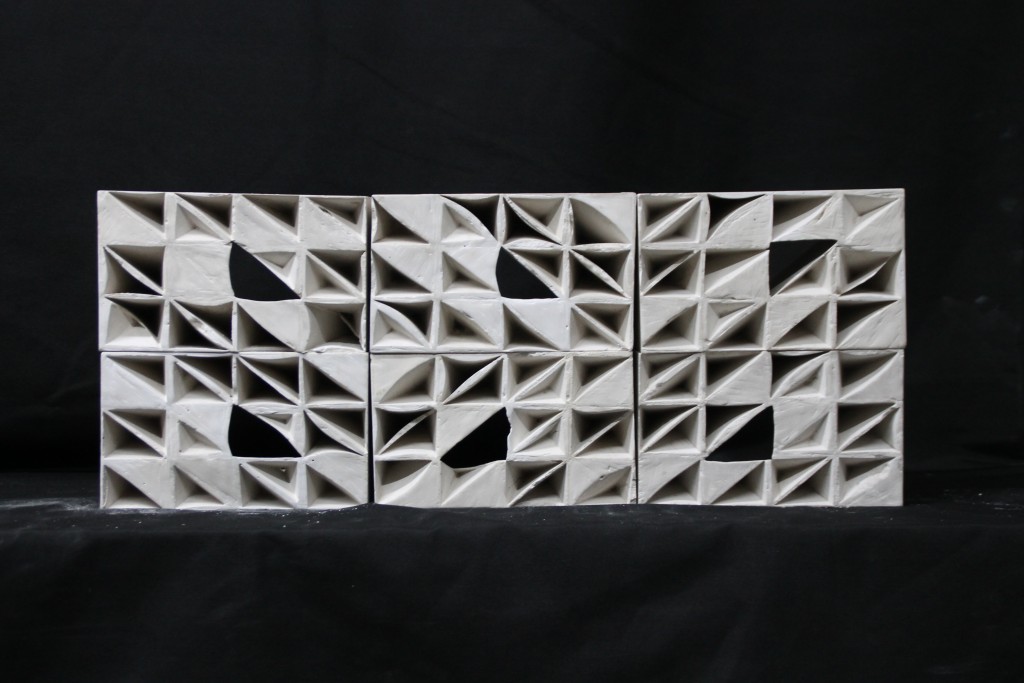 Machine: laser cutter
Machine: laser cutter
Density: 50%
Performance: privacy
Our task was to create a plaster brick mould whose geometry performs to create privacy. Our approach to privacy was two-fold; By designing variation into our six bricks to produce a series of different angles of vision across the accumulative wall, and also by obscuring the openings within an intricate pattern. This pattern was created using triangular geometries of varying depths.
To play with these ideas of privacy we designed the bricks to offer two very different experiences for the viewer, depending on which side of the wall they are on. On one side, the multi-faceted triangular pattern displays as a denser, more complex surface where (depending on the light angle) the opening might blend in amongst the other equally shaped triangular imprints, creating the illusion of privacy and solidity. On the other side, this small triangle expands out to the edges of the opposite face, taking up most of the brick face, creating a more open feel and clearly directing the viewer to a singular framed viewpoint.
This way, we offer opportunities for site specific variation, to orient the wall depending on the desired performance for each side. There are also many inter-brick pattern variations possible by flipping the bricks vertically (the mould itself is also invertible). Further, we have designed into the mould assembly method the ability to rearrange the triangle and hole pattern between castings. (see fabrication diagram below).
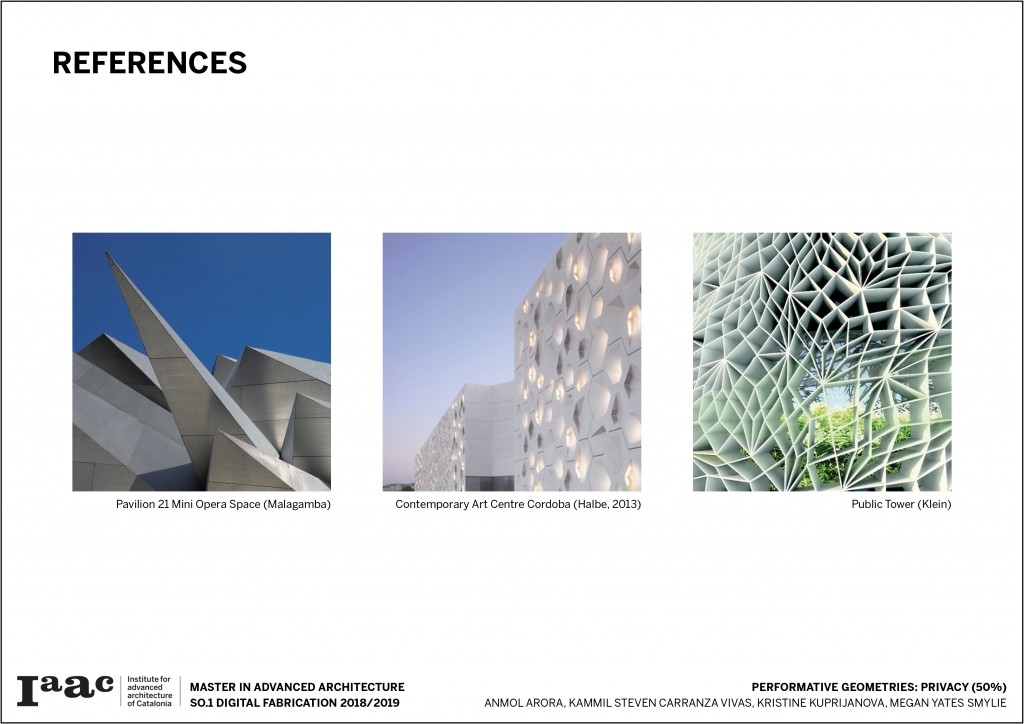
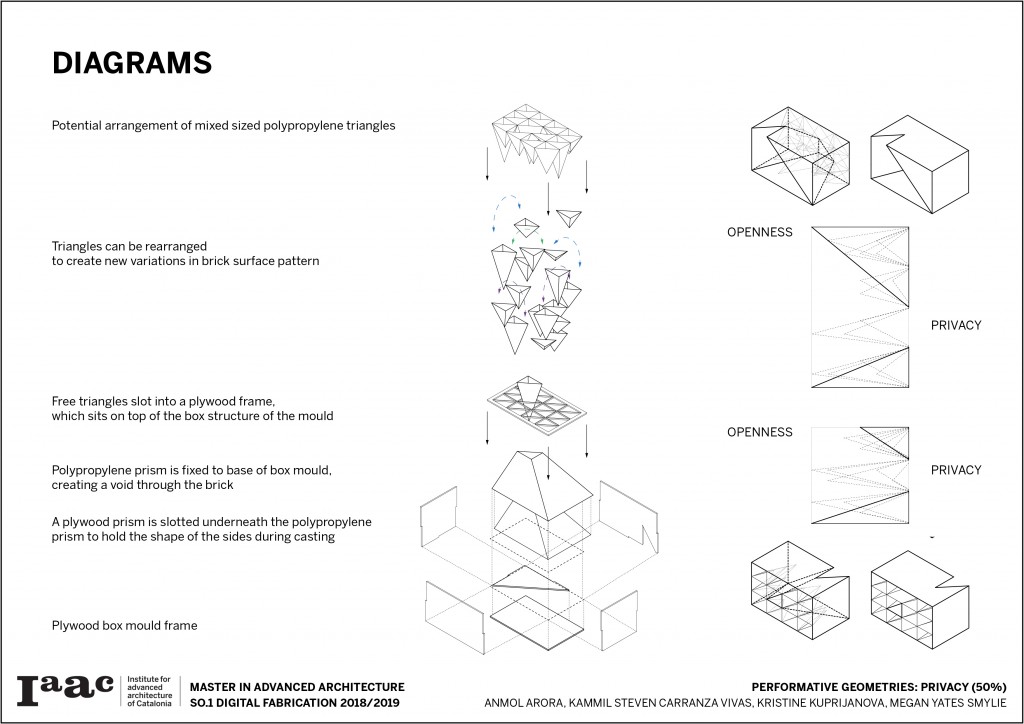
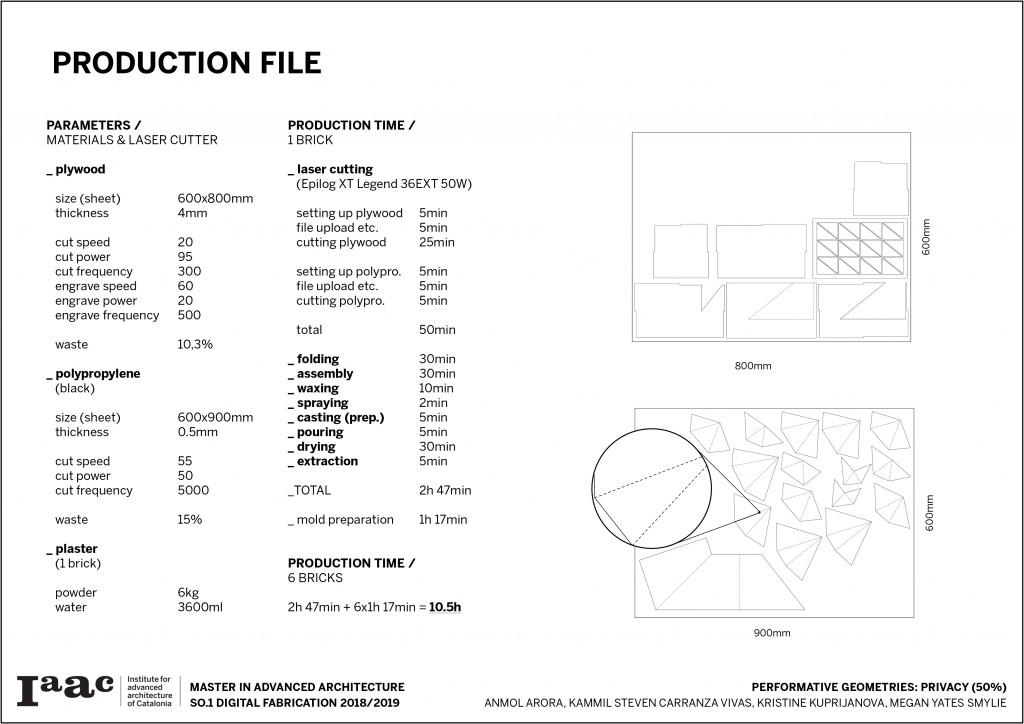
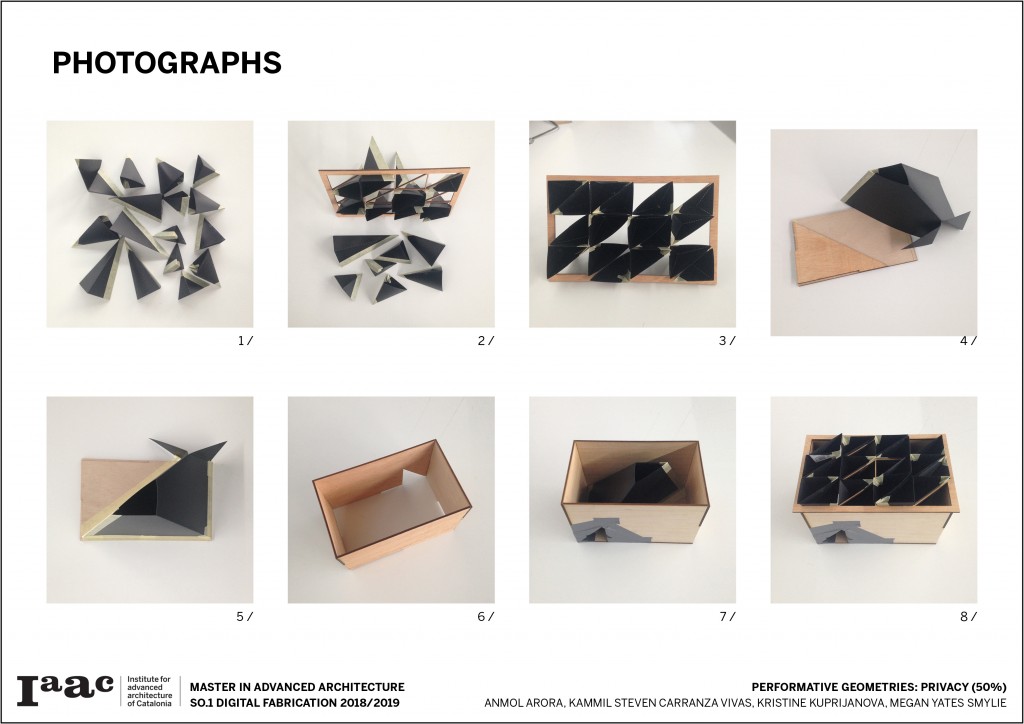
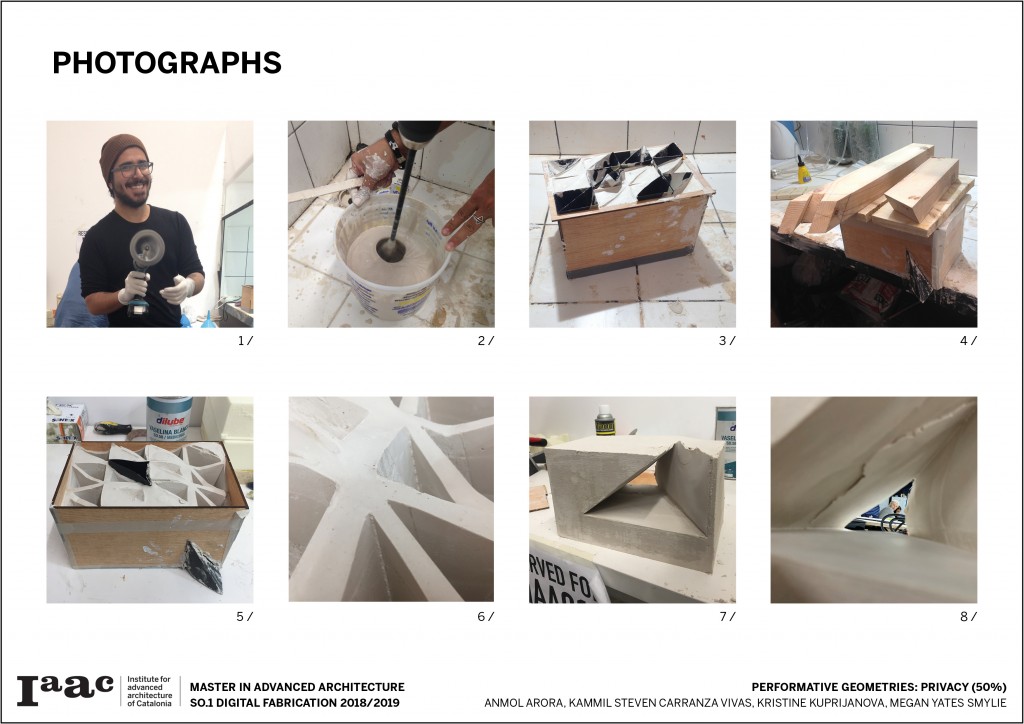
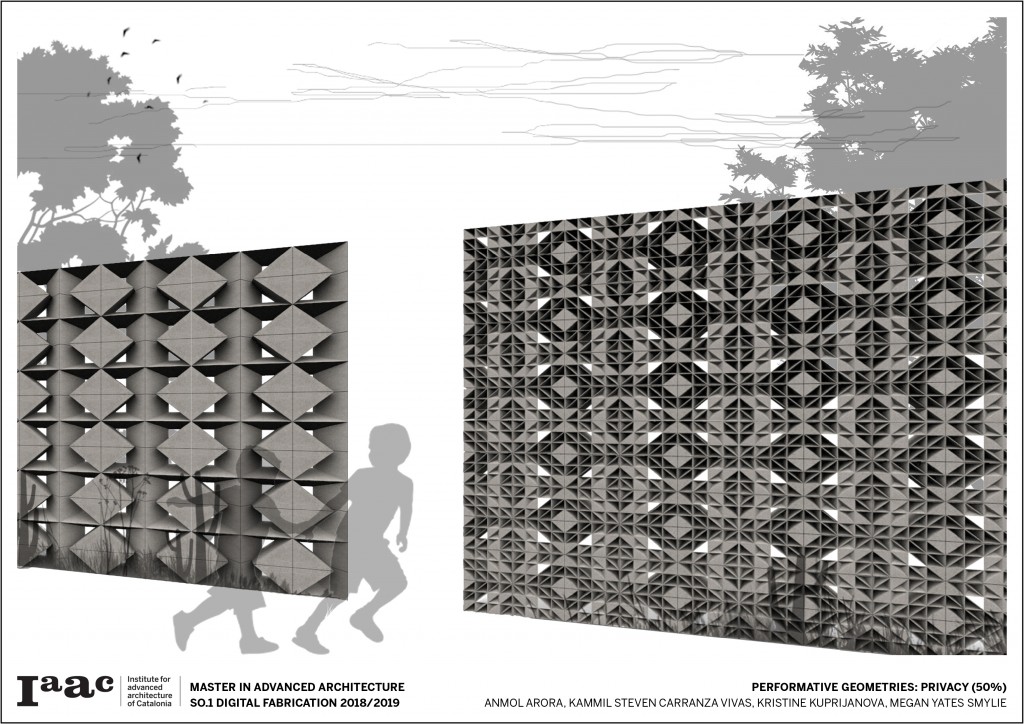
In conclusion, we discovered the benefits of creating form by the laser cutting technique of folding is that it offers the best solution for mould material minimisation. Combining this technique with the flexibility of polypropylene allows for easy extraction from the dried plaster and therefore facilitates reuse of the mould, however it does create challenges in terms of maintaining its original shape against the weight of the plaster. This issue can be compensated for by creating foam/plywood/cardboard inserts which slot loosely inside of the polypropylene forms for casting. Critical to the success of this particular brick design and mould casting method was to pour all of the plaster (ratio 75% plaster / 25%water) in one go, while shaking the box mould to level the plaster. The top frame is then immediately placed on top, and the free polypropylene triangles are finally (and quickly) slotted into the frame openings, and into the plaster brick as it dries, from the centre triangles outward, to best spread the plaster between the triangle inserts. A rigorous process of testing, and testing again with scaled prototypes enabled us to reach these conclusions and ultimately, create a satisfying final result.
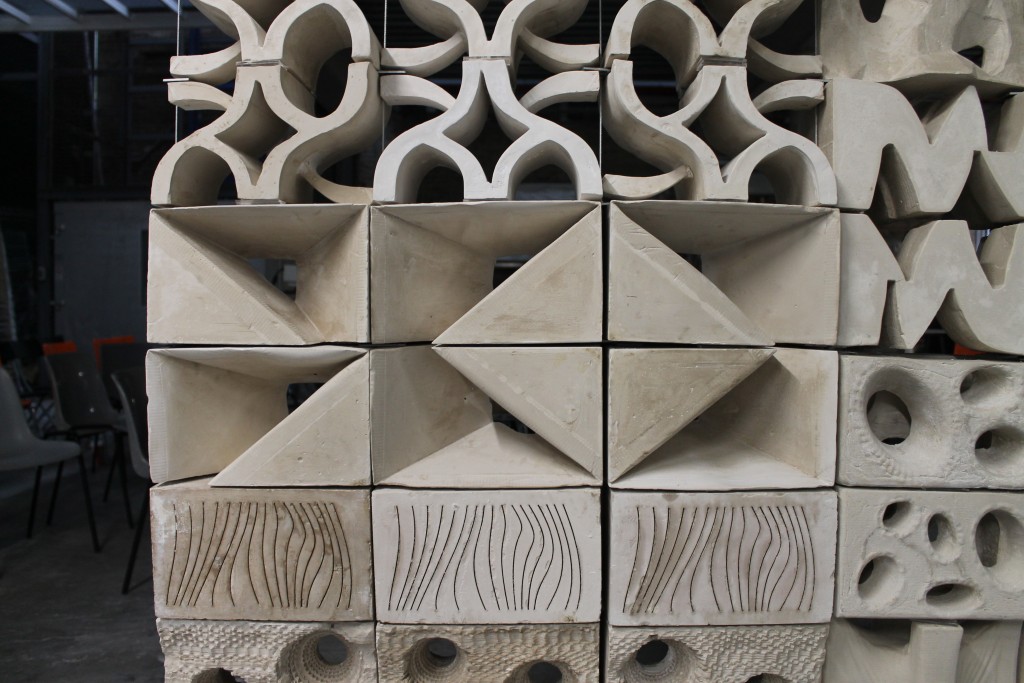
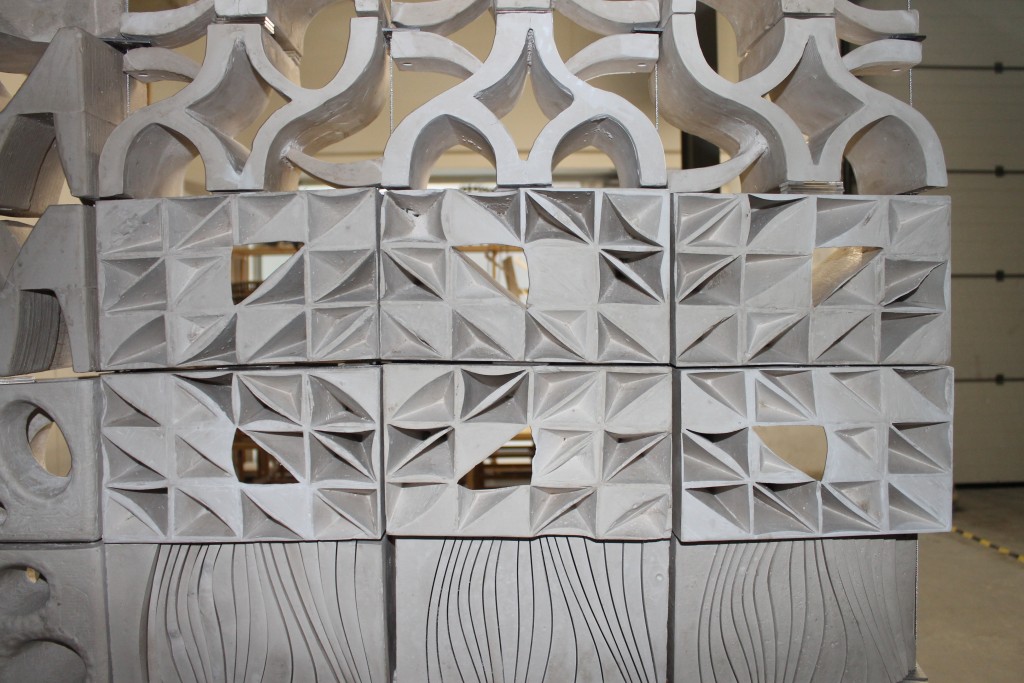
“Performative Geometries: Privacy” is a project of IaaC,
Institute for Advanced Architecture of Catalonia
Developed at Master in Advanced Architecture in 2018 by:
Students: Anmol Arora, Kammil Steven Carranza Vivas, Kristine Kuprijanova, Megan Yates Smiley
Faculty: Alexandre Dubor, Ricardo Mayor